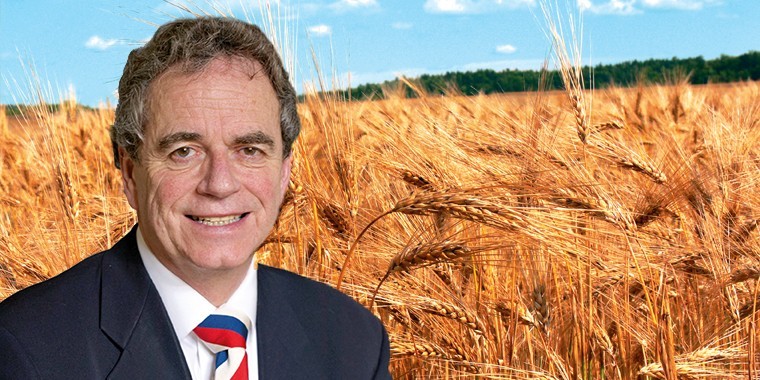During the past month there have been periods when, albeit at record high prices, the wheat futures have been “range bound”, only moving a few pounds over a week. Then Mr Putin makes a comment like: “Peace talks have reached a dead end” and futures shoot up £15 in two days! We really are into the Donald Rumsfeld world of “unknown unknowns” being “the ones we don’t know that we don’t know”. The imponderables are never ending.
The change in March came when at last Russian troops began withdrawing to the East of Ukraine. At the same time Ukraine commented that it had no plan to become a member of NATO or the EU, rather that they would prefer neutrality like Sweden or Austria.
The market took some comfort from that and futures prices fell, but in the absence of further progress and now with the “dead end” comment, markets have risen again. Planting the remaining spring barley in Ukraine is still concerning. Of their wheat, 98% was winter planted, but it still needs to be husbanded up to harvest.
But Ukraine’s capacity to export whatever its crop is remains more important than its production potential. Old crop wheat and maize continues to be exported via other Balkan countries and, like Russia, export by train continues over many borders. This could be a few hundred thousand tonnes up to several million. No one really knows.
World buyers are now cutting deals with alternative exporters for all commodities. So wheat, maize and barley are being re-routed to cover some shortages. For example, India has thrown its hat into the ring as an alternative wheat supplier to Egypt and its export surplus is being talked up. In the UK, as we always predicted, everything is running out. It’s just a question of whether barley will hold out until new crop French is available in June and wheat in July. Until then it will be the usual tussle between the needy and the greedy, or as my colleagues say, when talking about the bigger world supply and demand position, the haves and have nots!
Recent history shows how dangerous it is to try to forecast the likely pattern of new crop markets against anything before the last eight weeks of conflict. However, there are one or two almost certainties.
Talking barley first. With the plantings we have, and the reasonable state of the crop, it’s likely the UK will have a surplus on paper similar to this year, so at least one million tonnes. Of that, half should be spring malting barley. So there is no reason to suppose that we will be short of barley from harvest to Christmas. In fact the necessary export programme to keep our decks clear of both feed and malting is already under way. So, it’s just a question of the export price parity. If the Black Sea is absent it will then depend upon who is the next cheapest seller of feed barley to take its place.
UK export malting barley will be geared to the French and Danish export value. They both started their export campaigns some months ago. Both have well established spring and winter malting crops. Of course their prices, like ours, have moved up and down with the rest of the war-affected markets. The current forward price for UK malting barley is at a historic high never seen before at this stage of the growing season.
There are two price factors to consider. Firstly, the traditional differential between old and new crop malting barley prices. Mainly because of the real shortage of feed barley, which has squeezed the premium, old crop malting price is about £25 above new crop. History indicates these two will come together at some point. As most maltsters and brewers are covered now until harvest, it’s likely the old crop price will meet the new crop before harvest.
Secondly you have what I term the war premium. This is the amount of extra value in all the new crop prices (and some old) simply because of the conflict. It follows that when there is a cessation of hostilities, even a temporary one, some or all of the war premium will be lost from the price. The big question is how much? Clearly the higher the forward price goes, the greater the fall is likely to be. Just taking new crop malting barley that has risen by £90 per tonne, how much of that could be sacrificed? £40/£50, more or less. For sure, having appreciated that much already, on the back of the wheat futures, there is likely to be more on the downside rather than the upside. Obviously this presumes that our ok-looking UK crop comes through on average and the conflict does cease at some point!
Winston Churchill once offered the country only “blood, toil, tears and sweat”. Hopefully you won’t get any of that but certainly the thing you will get is more volatility and plenty of it.




